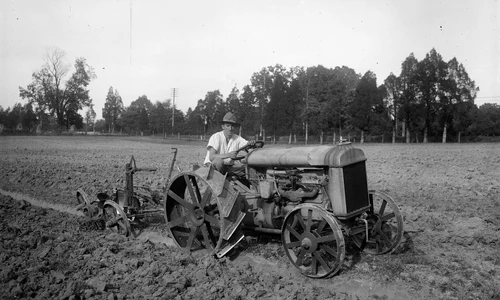
A German-Russian secret agreement: the Treaty of Rapallo
April 16th, 1922. Germany and Russia, the former adversaries of World War I, met in the Italian city of Rapallo to sign a treaty through which each renounced the territorial and financial claims set in 1918 by the Peace Treaty of Brest-Litovsk.
The Treaty of Rapallo officially brings a normalization of German-Russian political relations after 1918, as the two countries agree to "co-operate in a spirit of mutual goodwill in meeting the economic needs of both countries". At first, nothing seemed wrong with this amicable agreement. But behind it, there was a secret arrangement that would allow Germany to break the obligations of Versailles. It would be Germany’s first step towards remilitarization, and it would end with a conflict even bloodier than the one that had just ended.
The agreement between Germany and the Soviet Union was not at all surprising. The two countries had been enemies during the war, but in 1919 they were both on the losing side. Russia leaves the war after the October Revolution, signs a disgraceful peace treaty (at Brest-Litovsk), and her revolutionary government isn’t acknowledged by other countries. On the other hand, Germany had lost the war in only a couple of weeks and was forced to accept a peace that, according to the national public opinion, was more like a diktat. After the war, both Germany and Soviet Russia were isolated diplomatically:Germany, because she was considered the only one responsible for the war, and Russia, because of her new regime. As such, the two countries, separated from the rest of Europe, could only count on each other for support.
The treaty of Rapallo meant a great deal for Russia, whose soviet government had not yet been acknowledged by other states. Signing this treaty, Germany acknowledges this Bolshevik regime as the rightful government of Russia, putting an end to the USSR’s diplomatic isolation.
According to the secret agreements, the USSR would allow Germany to train her soldiers on soviet ground. In return, Germany would send to Russia officers to train the new Red Army. At first, Germany seemed to gain more from this arrangement. But the Soviet Union also had a lot to gain, taking advantage of the German military expertise. This would become obvious during World War II. Even if most of the soviet officers trained by German specialists would never even see the front (most of them will be executed or imprisoned during the Great Purge), the progress in the military industry would prepare the Russians for the war against her former ally.
The Allied Control Commission, that was supposed to make sure Germany wouldn’t break the Versailles clauses, especially the ones regarding her army, couldn’t control what the Germans were doing on another country’s territory.
Theoretically, Germany’s army was limited to 100.000 soldiers. However, the Germans found a way to go around the limit imposed on them at Versailles. A lot of paramilitary organizations appeared in Germany after the war, in the form of patriotic guards, youth organizations and border patrols etc. These organizations couldn’t be controlled by the Allied Commission, and so thousands of officers received illegal training in the Weimar Republic. And let’s not forget about the ones trained in the Soviet Union until the 1930s, which is when the secret agreement of 1922 was no longer prolonged.
















